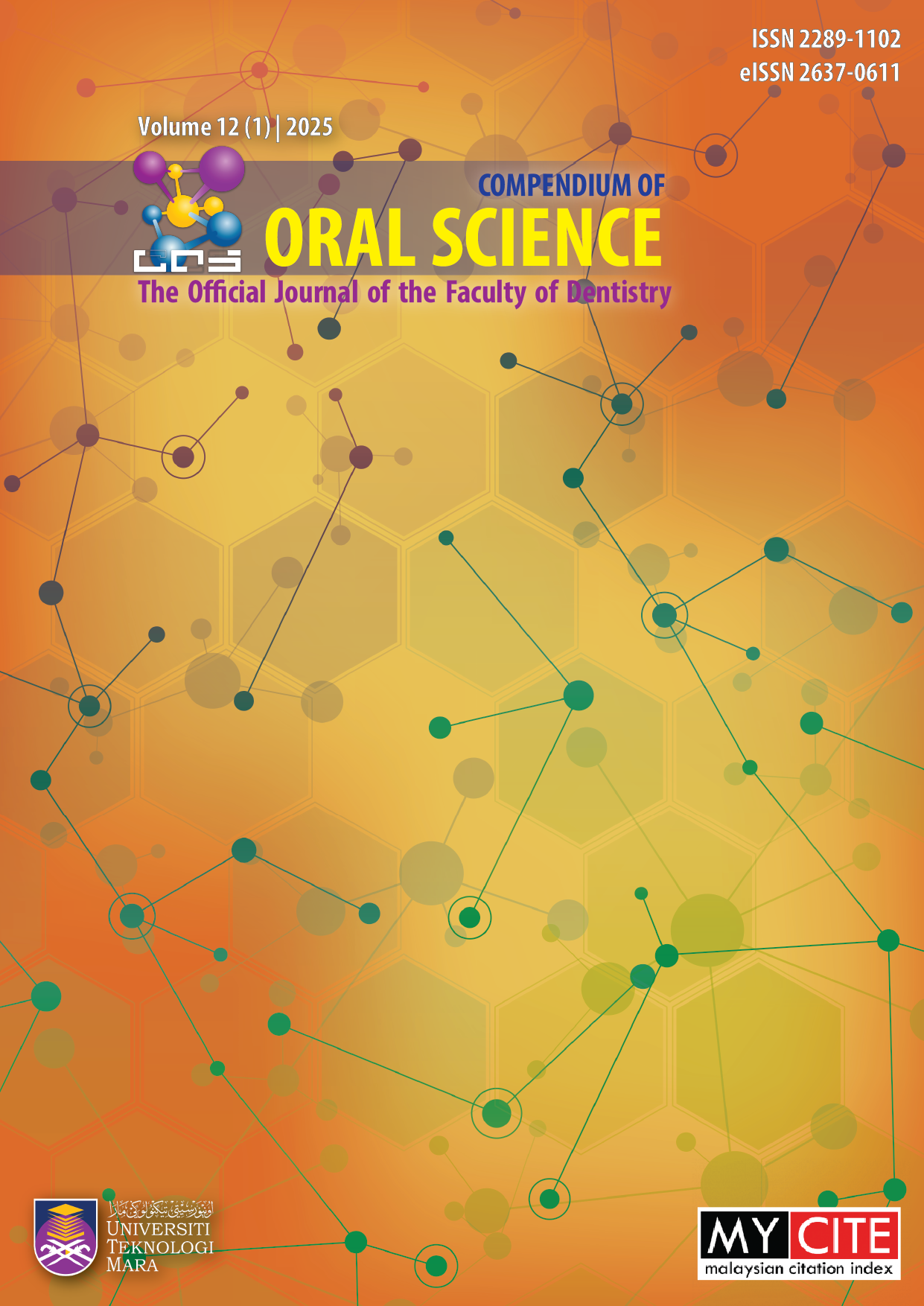Surface Characteristics of Calcium Chloride Surface-Treated Mini Implant
DOI:
https://doi.org/10.24191/cos.v12i1.5649Keywords:
orthodontic mini-implant, surface treated, primary stability, calcium chloride, crystallisationAbstract
Objective: This study aimed to investigate the surface characteristics of surface-treated titanium orthodontic mini-implant (MI) with acid etching and immersion in different conditions (concentrations, temperature and duration) of calcium chloride (CaCl₂). Materials and Methods: Eighty-four MI by Orthodontic Microimplant AbsoAnchor® System (Dentos Inc.) were utilised in this study. Surface roughness was assessed qualitatively and quantitatively with a scanning electron micrograph (SEM)(at 50x,500x and 1000x magnifications) and energy-dispersive spectrometer (EDS) (Fei Quanta FEG 450 Environmental Electron Microscope) of the surface-treated MI with different conditions of CaCl₂ immersions; concentrations (0.01 M, 0.1 M & 1.0 M), temperature (5°C,15°C and 25°C) and duration ( 1hour, 7 hours and 24 hours). Results: Surface topography changes were observed due to increase in surface roughness of MI treated with acid etching and CaCl2 immersions at various conditions . There was a significant difference in surface topographic changes seen by various irregularities with small cavities and protrusions were observed on surface of the MIs at different magnifications. The highest level of Ca2+ concentration detected was in 0.1 M at 5°C for 7 hours of CaCl₂ immersion. Conclusion: MI surface modification using CaCl2 surface treatment provided a significant difference in surface topographic changes seen between the MI groups. Hence, it increased the potential surface area of osseointegration and enhanced tissue renewal and repair. The physicochemical characteristics analysis showed a significant presence of calcium ions by % wt on the MI surface. Different temperatures, concentrations, and times of immersion did affect the availability of CaCl₂ on the MI surface and CaCl₂ condition of 0.1 M at 5°C for 7 hours of immersion was the optimum condition.
Downloads
Published
How to Cite
Issue
Section
License
Copyright (c) 2025 Compendium of Oral Science

This work is licensed under a Creative Commons Attribution-NonCommercial 4.0 International License.
Materials contained in the journal may be reproduced for educational purposes provided that both the author(s) and the journal are appropriately recognised; otherwise duplication is not permitted. No articles, reports, or portions there of may be translated into other languages, published in books, journals, magazines, or any other print form without written permission from the authors and from the journal.
Disclaimer: The statements, opinions and data expressed in the articles and reports herein are those of the author(s) and not of the publisher and the editor(s). The publisher and the editor(s) disclaim responsibility for any injury to persons or property resulting from any schemes, methods, instructions or ideas referred to in the content.















